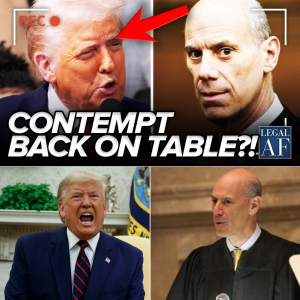
A dramatic political screenplay masquerading as breaking news swept across social media this week, claiming Senator John Neely Kennedy stunned the Senate chamber by reading from a mysterious “Final Omar File” that allegedly exposed financial misconduct by Representative Ilhan Omar. The viral story described a hushed chamber, a 42-second silence, and a cascade of shocking allegations.
None of it happened.
Despite the vivid and theatrical details, no such confrontation took place, and the documents, transactions, and accusations described in the viral posts are entirely fabricated. Still, the narrative ignited an enormous online wave, revealing just how quickly political fiction can be mistaken for reality in the digital age.
How the Fictional Story Took Over the Internet
The viral script began circulating across TikTok, X (Twitter), Facebook, and fringe political forums in a highly cinematic format, complete with stage directions and dramatic pauses. According to the hoax:
-
Kennedy allegedly rose during a routine border bill session
-
He held an “unmarked folder”
-
He accused Omar of funneling millions through charities and offshore accounts
-
He delivered a “kill-line” that caused the chamber to freeze
-
C-SPAN allegedly broke viewership records
-
Omar fled the gallery in shock
None of these claims correspond to any actual congressional record, session transcript, IRS filing, or public disclosure. The “Somali Relief Fund,” shell companies, wire transfers, and timeline events mentioned in the viral narrative do not exist in official documentation.
Political misinformation researchers quickly identified the post as another example of AI-assisted political fan-fiction, crafted for viral engagement rather than factual reporting.
Why the Story Spread So Rapidly
Although fictional, the hoax resonated with millions for several reasons:
1. It read like a Hollywood screenplay
The narrative used suspense, silence, slow pacing, and dramatic reveals — techniques common in thriller films and bestselling political novels. Social media audiences often gravitate to highly emotional storytelling over factual reporting.
2. Real political figures make fiction feel plausible
Kennedy is widely known for sharp, witty remarks during hearings; Omar is frequently the target of political misinformation campaigns. Their public profiles made the fictional showdown feel believable to those unfamiliar with congressional procedure.
3. AI-enhanced visual content amplified the hoax
Fake screenshots, edited images, and fabricated “C-SPAN clips” circulated widely, giving the illusion of authenticity even though no such footage exists.
4. Polarized online communities spread it reflexively
Supporters and critics of both political figures reshared the story — some believing it was real, others reacting emotionally before confirming its authenticity.
Fact-Checking the Claims
Multiple components of the viral story contradict verifiable public record:
-
No Senate session included a confrontation involving Omar — House members do not sit in Senate galleries for legislative disputes of this nature.
-
No evidence exists of the alleged charities, wire transfers, or offshore accounts named in the story.
-
C-SPAN never recorded 89 million concurrent viewers, a number vastly exceeding its platform capacity.
-
No federal evidence file labeled “Final Omar File” exists in any public or sealed docket.
-
No motion, ethics complaint, or investigation involving the described accusations has been filed.
Every detail — from the 42-second silence to the so-called “truth don’t need a visa” sign-off — is a product of creative writing, designed for shock value.
The Broader Trend: Political Fiction Presented as News
Experts note that stories like this represent a rising challenge: political narratives created purely for entertainment are being consumed as factual journalism.
Three forces drive this trend:
1. AI tools make fabrication easier
Anyone can now generate hyper-realistic images, transcripts, or video clips, giving false stories a veneer of legitimacy.
2. Emotion spreads faster than accuracy
Outrage, suspense, and scandal trigger the fastest engagement, which rewards creators of sensational fiction.
3. Public distrust fuels conspiracy acceptance
In a climate where many voters distrust institutions, fabricated “document dumps” and “secret files” easily gain traction.
Why These Hoaxes Matter
Even when debunked, viral political fabrications can have lasting effects:
-
They distort public perceptions of real lawmakers
-
They redirect attention from legitimate policy debates
-
They fuel polarization by manufacturing conflict
-
They damage democratic literacy by normalizing fictional governance
-
They erode trust in verified journalism
When synthetic drama becomes more popular than real congressional events, Americans risk forming opinions based on fan-fiction rather than fact.
Conclusion: A Powerful Reminder of the Digital Age’s Misinformation Machine
The fictional “Kennedy vs. Omar” Senate showdown demonstrates how quickly and convincingly political hoaxes can spread. The imagery, dialogue, and dramatic structure made the story irresistible — even though no event, document, or accusation described in it exists in reality.
As election cycles intensify and AI-generated content grows more sophisticated, the ability to verify before sharing will become one of the most essential civic skills.





